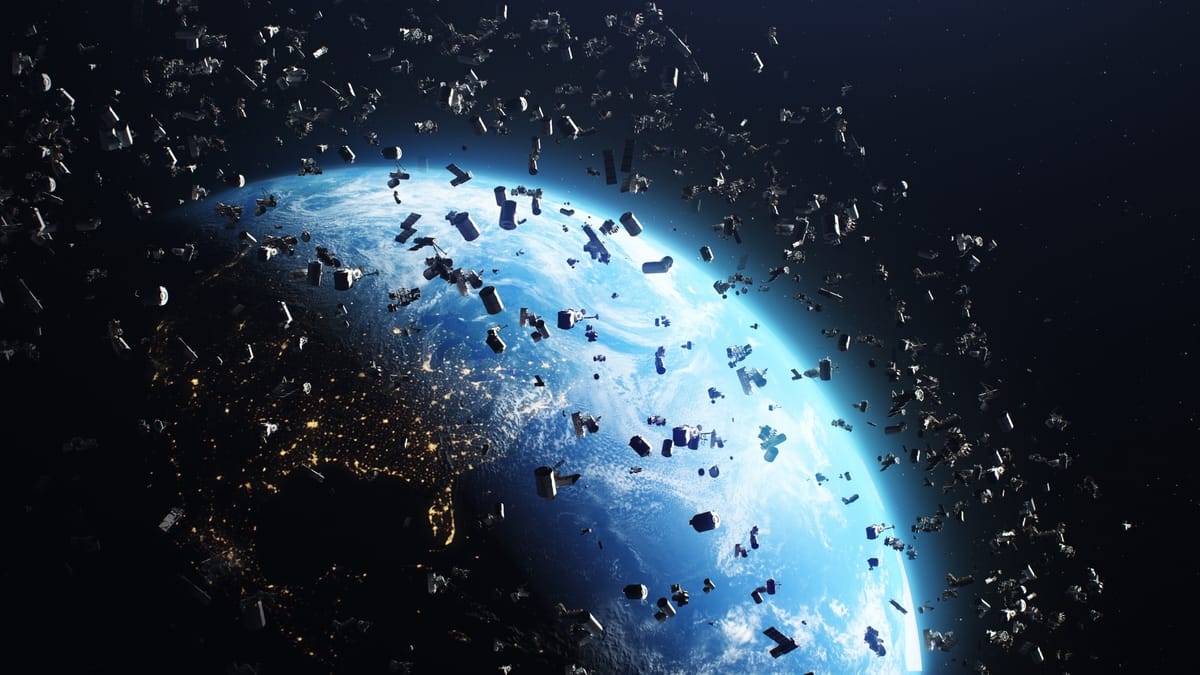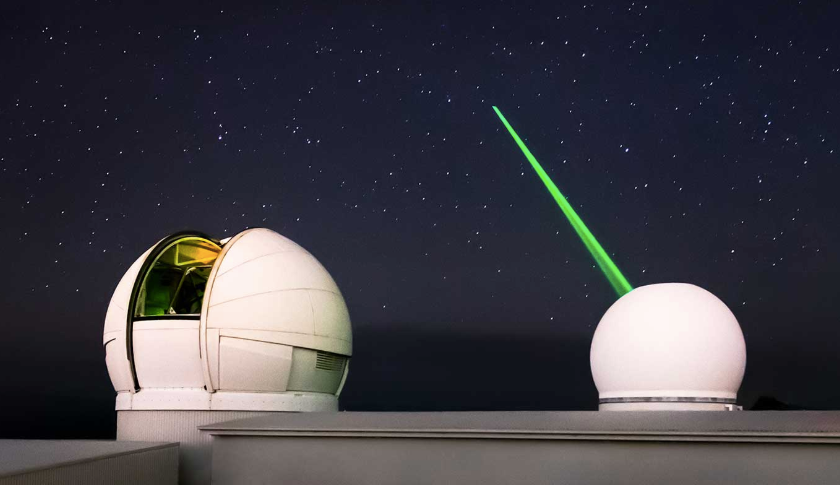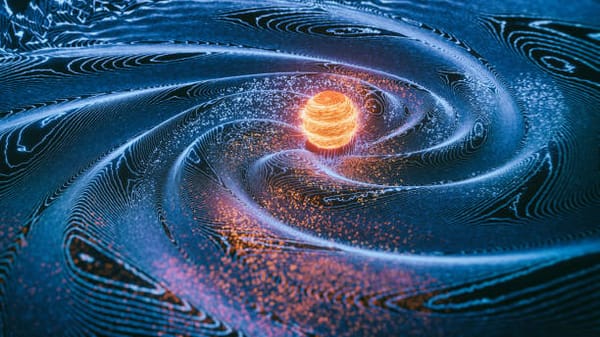How Space Debris Could End Modern Life!
It's not a black hole or a rogue asteroid hurtling towards Earth. No, it's something much closer, yet equally menacing – space trash.

In the vast expanse of the cosmos, where stars twinkle and galaxies swirl, an invisible threat looms. It's not a black hole or a rogue asteroid hurtling towards Earth. No, it's something much closer, yet equally menacing – space trash.
Space trash, also known as space debris or orbital debris, is the accumulation of defunct satellites, spent rocket stages, and other fragments resulting from human activity in space. While it may seem inconsequential against the backdrop of the infinite universe, space trash poses a significant risk to our continued exploration and exploitation of space.
In 1965, an unexpected collision in space led to the disintegration of two satellites, creating a cloud of nearly 500 fragments whirling around Earth at incredible speeds. This was not just an isolated event but a precursor to a growing issue. By 2009, the situation escalated when an inactive Russian satellite collided with an active commercial one, generating over 3,200 pieces of space debris. Today, the challenge is compounded by SpaceX's ambitious Starlink project, which has already added hundreds of satellites into orbit, with plans for thousands more. These events mark the evolution of our outer space into a bustling orbit full of high-speed debris, threatening not only satellites but also vital global communications and weather monitoring systems. It's time to acknowledge that our footprint extends far beyond Earth's surface. So, Let’s explore the dynamic and dangerous realm of space debris, how what goes up does not always come down—and what we can do about it.
Introduction
Since the advent of the space age in the 1950s, thousands of rockets have been launched, leaving numerous objects in orbit around the Earth. With many of these objects still present, the risk of collision continues to grow. As humanity continues to explore space, addressing the challenge of space debris becomes increasingly crucial to ensuring the sustainability of space activities and safeguarding vital satellite infrastructure.
History of space debris
Since 1961, over 560 instances of in-orbit fragmentation have been documented, with a mere seven linked to collisions. Most of these events entail spacecraft and upper stage explosions. However, it's anticipated that collisions will increasingly contribute to space debris in the future, potentially becoming the primary source.
The rate of space debris accumulation is alarming. Over 15,000 satellites have been launched since the start of space exploration. With rocket launches occurring more than three times per week, often deploying multiple satellites, the potential for generating more debris increases. In 2000, there were approximately 8,000 trackable pieces of debris in space, a number that surged to about 20,000 by 2019 and now nears 30,000 just five years later. The expansion of satellite constellations, notably driven by initiatives like SpaceX's Starlink program, significantly contributes to this proliferation.
Investment on space exploration
Investments in space exploration, both public and private, are on the rise. In 2020 alone, investors poured roughly $9 billion into private space endeavors. The growth extends to governmental space agencies, with at least 70 countries boosting their space budgets. Forecasts predict even more substantial investments, with proposals suggesting up to 12,000 new satellites launched annually over the next decade. Consequently, there's heightened attention toward mitigating space debris accumulation. Countries and private entities must continue developing and adhering to policies supporting responsible space exploration to address this mounting issue.

As the interest and investment in space exploration continue to surge, it's crucial to prioritize efforts to mitigate the accumulation of space debris. Without proactive measures, the trend of increasing debris poses significant challenges to space activities and satellite infrastructure. Thus, concerted actions must be taken to curb the growth of space junk as more nations and private companies delve deeper into space exploration endeavors.
Nature of space debris
All space debris originating from objects launched from Earth lingers in orbit until re-entering the atmosphere. A low Earth orbit is an orbit relatively close to Earth's surface, typically at an altitude of less than 1000 kilometers but possibly as low as 160 kilometers above Earth. On the other hand, a high Earth orbit is one in which the altitude at apogee exceeds that of the geosynchronous orbit, which is approximately 35,786 kilometers above sea level.
Items in lower Earth orbits, typically a few hundred kilometers high, often return to the Earth relatively swiftly within a few years due to factors such as atmospheric drag. Upon re-entry, the debris encounters frictional forces from the atmosphere, causing it to burn up, typically preventing it from reaching the Earth's surface. However, satellites or debris positioned at higher orbits, around 36,000 kilometers like those in geostationary orbits for communication and weather satellites, can persist for hundreds or even thousands of years.
Space junks are also produced from collisions or anti-satellite tests conducted in orbit under certain instances. Collisions between satellites can result in their fragmentation into numerous new pieces, exacerbating the debris issue. While such occurrences are infrequent, several countries, including the USA, China, and India, have conducted missile tests aimed at destroying their own satellites. These tests generate thousands of additional fragments, further contributing to the hazardous accumulation of space debris.
Space junk presents a significant danger due to the high speeds at which objects orbit the Earth, typically around 10 kilometers per second—roughly 300 times faster than the maximum speed on most US highways. Even minuscule debris pieces pose threats, as collisions with larger objects at such velocities can result in severe damage. For instance, a ten-centimeter object could shatter an average satellite upon impact. In space, there are approximately 30,000 similarly sized objects, both space junk and naturally occurring debris. Moreover, smaller debris, like a one-centimeter object, could puncture the protective shields of the International Space Station, with roughly 670,000 objects of similar size in space.
Incident occurred in history
Instances of space junk causing damage are not hypothetical. In 2021, the ISS suffered damage when struck by a two-inch piece of debris. Since 2000, the ISS has undertaken 32 maneuvers to avoid potential collisions, underscoring the severity of the issue. In 2015, astronauts were compelled to evacuate to a space capsule due to an imminent threat from approaching debris. While collisions remain infrequent, the increasing quantity of space debris heightens the risk of future incidents.
Despite the prevalence of collision avoidance maneuvers, collisions do occur, albeit rarely. Notably, a Chinese satellite disintegrated in March 2021 following a collision, marking the first such event since 2009. Moreover, when venturing beyond Earth's orbit, the limited amount of space junk poses minimal concern. Nevertheless, the risk of collisions underscores the importance of addressing the accumulation of space debris to safeguard satellites and spacecraft.
Steps taken to control space debris
Despite the risks associated with space debris, steps are being taken to reduce these hazards and safeguard space missions and infrastructure. Efforts to clean up space junk are underway, with the United Nations urging companies to remove their satellites from orbit within 25 years after their missions end. However, enforcing this directive proves challenging, given the possibility of satellite failures. To address this issue, numerous companies worldwide are devising innovative solutions.

Space scientists have looked at different ways to tackle this problem. They've considered using a harpoon, a giant net, or magnets to grab satellites. These approaches involve retrieving defunct satellites from orbit and guiding them back into the Earth's atmosphere, where they will burn up upon re-entry.
However, the laser firing method stands out because it's good at quickly removing small bits of debris from 1 centimeter to 10 centimeters. They can use lasers as the beam of energy and apply force to any object to push it into higher orbits where there's less junk or push the debris into the earth’s atmosphere. Also, lasers can be used to heat up the satellite and make it fall out of orbit faster. Notably, lasers can achieve these objectives without physical contact, distinguishing them as a versatile and standout solution, among other methods.
Also under NASA's 2023 cost and benefit analysis of space debris removal methods, it is found that the laser system is the most cost effective way of removing the smaller debris.
There are two types of lasers: Ground-based and space-based. They differ in their approach to debris removal in orbit. Ground-based lasers operate from Earth's surface and typically use powerful lasers to target and track debris in orbit. They rely on precise aiming and tracking systems to direct the laser beams toward the debris, potentially altering its trajectory or causing it to deorbit by heating it up which is called thermal ablation. However, they are limited by atmospheric conditions and can only target objects within line-of-sight.
On the other hand, space-based lasers are deployed in orbit themselves, generally in higher orbits, offering greater maneuverability and flexibility in targeting debris. They can operate without atmospheric interference and have the advantage of being able to approach debris from different angles, potentially increasing the effectiveness of debris removal efforts. However, space-based lasers face challenges such as power supply, maintenance, and the risk of creating additional debris from the vaporized material.
It is crucial to consider the laser as well as other methods for removing space debris. While both ground-based and space-based technologies offer potential solutions for debris removal, international collaboration, and sustained efforts are essential for ensuring the long-term sustainability of space activities.
In response to the escalating issue of space debris, organizations like the United Nations Committee on the Peaceful Uses of Outer Space and the European Space Agency are collaborating to develop guidelines for space travel, satellite deorbiting, and debris removal. Other governmental actions include the United States' Space Policy Directives and Orbital Debris Implementation Plan to address the problem. Additionally, various nongovernmental organizations and companies are engaged in space traffic management endeavors. However, existing recommendations for space activity, established by the UN half a century ago, lack provisions for addressing contemporary space challenges, as they were formulated before many technological advancements and did not mandate compliance, nor do they address the removal of inactive satellites already in orbit.
Conclusion
Hence, it's crucial to re-establish policies that will significantly contribute to the removal of space debris. With these proper policies, the effective utilization of technology becomes easier, making it imperative to implement them.
These efforts highlight the collective commitment to ensuring the sustainability and safety of activities conducted in space, paving the way for continued exploration and advancements in space technology.
Let's continue to advocate for responsible space practices and support initiatives that address this pressing issue.




